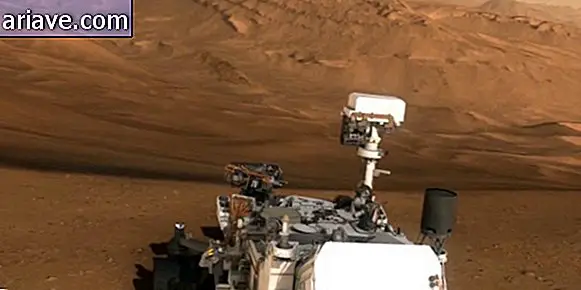What if there was a beacon to guide aliens to Earth?
Since the beginning of space exploration, one of the main reasons for missions is to find life forms off Earth. At first this search comes only from us human beings; but if the other side emits a signal in the middle of a lot of information, everything is easier.
We have already analyzed the signals that have come this far, trying to recognize some message from a civilization as advanced as ours. Similarly, these possible aliens might be looking for it too, so sending signals to potential life locations would be a strategy for establishing some kind of contact.

Given this, a new MIT study looked into the possibilities of building a kind of interstellar beacon, which would indicate to someone with the ability to decode the information that we inhabit this small planet.
Connected Antennas
Since the 1980s, there is a program that seeks intelligent extraterrestrial life, Search for Extraterrestrial Intelligence (SETI), by analyzing radio signals and possible laser signals. The sky is mapped generally, but some specific points receive more attention for their potential to harbor some kind of intelligent life.

Several signs have already caught the eye and were analyzed further, as they could contain some relevant information, but to date no message has been found. The idea that our radio waves are detected by aliens is not new, but the intentional sending of information is not yet done.
Given our evolution in the aerospace industry in recent decades, it would not be surprising that a civilization, at least our level of development, could investigate signals from space for other life forms. Since we want to be found, the messages need to stand out in the sun when analyzed over long distances. Specifications for equipment of this size were determined by James Clark in a recently published feasibility study.
Death Star?
Clark says that, while challenging, the project would not be impossible to do with our current technology. The magnitude with which telescopes and lasers are currently being produced could make them capable of emitting signals that would catch the eye of an astronomer located on another planet. It is not known how he would treat the situation, but the researcher says that he would certainly identify as something different.

The largest operating telescope in the world has a diameter of 10.3 meters, but new equipment up to 30 meters is under construction. The analysis indicated that the contract would require the combination of a 2-megawatt laser directed at a 30-meter-diameter telescope. Another option would be to use a less powerful 1 megawatt laser, but offset by a reflective mirror that is an incredible 45 meters in diameter.
Such a combination would be capable of generating a detectable signal at 20, 000 light years, but the possible targets for a contact attempt are much closer. Proxima Centauri b is the exoplanet considered to be the first target, distant 4 light years, along with the planetary system around TRAPPIST-1, at 40 light years, which has characteristics very similar to our Solar System.

In addition to the issue surrounding the available equipment, laser intensity could damage the vision of a human looking directly at it. Satellite sensors, if hit, could also be damaged. Therefore, James suggests that the equipment be built on the dark side of the moon, minimizing the risks associated with the project.
The consequences of making such a contact are unpredictable, but an example of what could happen was described by Carl Sagan in his book "Contact." In it, using the same idea of a beacon, but unintentionally, aliens detect the first waves of TV emitted by humans and respond with coded information detected by SETI antennas.
The theme is interesting because it opens up several possibilities that we do not consider in our daily lives. Would we be welcomed or harassed by other civilizations? Given the colonization processes that have taken place between peoples here on Earth, the possibilities are endless. However, before sending signals, it is best to know very well what to do with a possible relationship, as the contact can become real.
***
Do you know the Mega Curioso newsletter? Weekly, we produce exclusive content for lovers of the biggest curiosities and bizarres of this big world! Register your email and do not miss this way to keep in touch!











